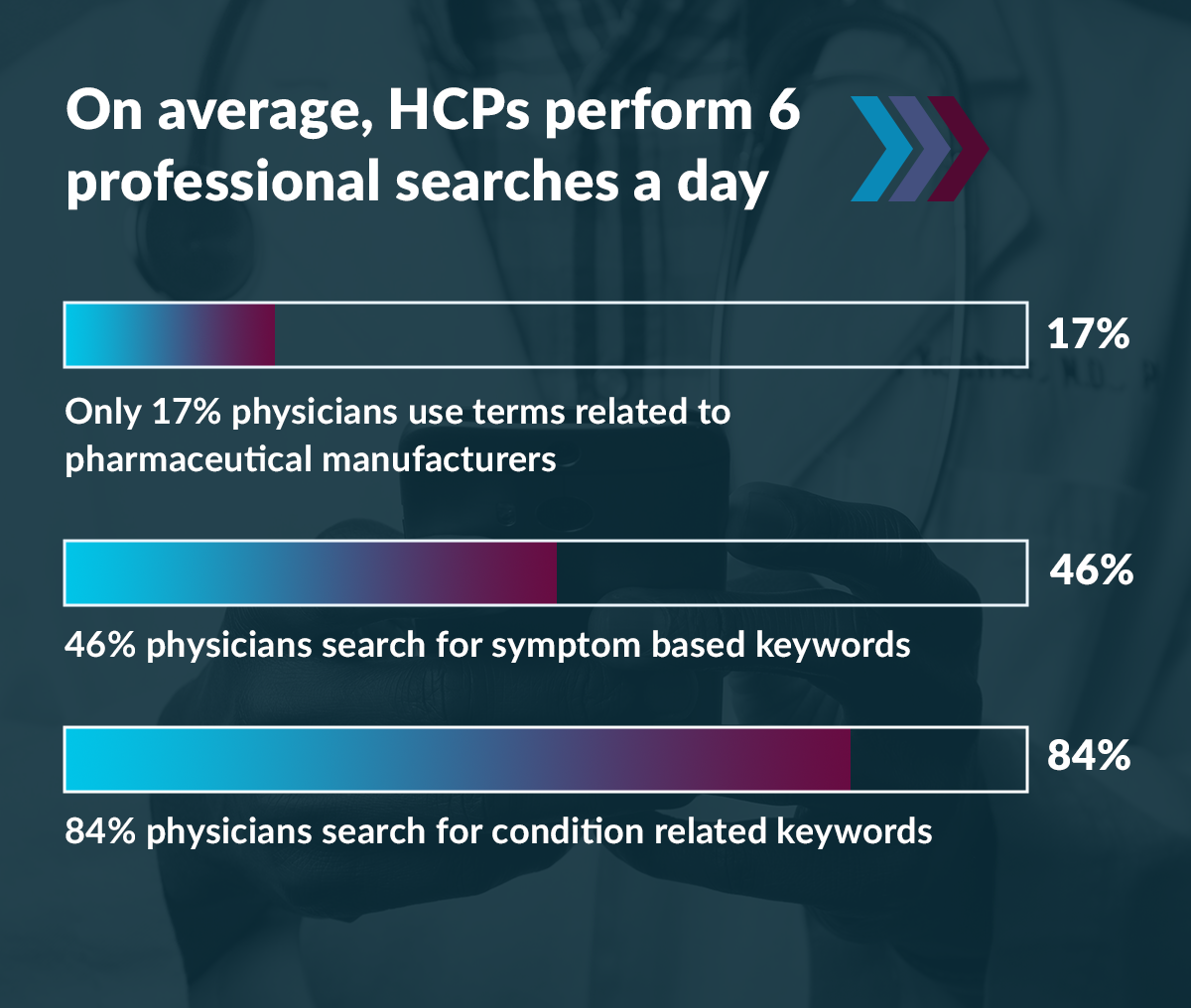Ensuring your company or product is presented first from a relevant search means that you are visible where competitors are hidden. It’s imperative that pharma businesses understand what their potential customers are searching for when they are typing into search fields.
But pharma has had a tendency to shy away from search engine optimization (SEO) strategy; however, for those who do engage with SEO marketing, the rewards can be high.
Helpfully, Google conducted research to work out how healthcare professionals were sourcing products online. Despite physicians conducting an average of six professional searches every working day, only 17% of them searched with the words “pharmaceutical manufacturers.” What physicians were searching for were symptom-based keywords (46%) and condition-based keywords (84%). Pharma marketers should understand the implications of this research. Being precise and communicating the symptoms and condition implicitly in association with your product, can drive your presence up the rankings and boost sales.
 Eight tips that work for ranking your pharma website are:
Eight tips that work for ranking your pharma website are:
1. Segment Audience
Target the public and healthcare professionals in separate areas or pages with appropriate keywords. Segment with pages dedicated to each audience. Make sure they are compliant with pharmaceutical marketing regulations.
2. Understand Search Intent
Identify keywords and use search intent modelling techniques. They can be categorized into searches about symptoms and diagnosis, treatments, and communities of long-time sufferers of chronic conditions.
3. Build a Clear Website Structure
Create a clear and concise website structure. The most important pages on your site should be near the top of this hierarchy.
4. Consider Keywords on Every Page
Ensure that the elements on each page are optimized to target these keywords, both to inform the user and also to indicate the topic of your pages to search engines.
5. Include Links with Trusted Sites
Attain backlinks from trusted, high-quality sites. Google sees this as a key factor for ranking. Focus on PR and press releases to well-established press, if possible, with digital links to your site or landing page and try to have links with respected institutions where relevant and permitted.
6. Mix the Content Type
Include a range of content types, such as images and videos that are clearly labelled, for higher hit rates on different kinds of searches.
7. Optimize for Mobile
Optimize and build for mobile use. Google’s research showed that 62% of physicians surveyed would abandon the mobile website if it was not optimized for a smartphone.
8. Provide Evidence of Expertise
Lastly, your website content will be judged on its trustworthiness, its expertise, and its authoritativeness. Ensure you display credentials and give sound guidance.
It is also key to understand that if your marketing strategy relies on social media, PR, or newsletters to draw your customers back to the website, that conversion will not happen if the website is inadequate, slow to load, difficult to navigate, or unclear. Start with the point of sales conversion, like your website, and work from there on marketing strategies to link back to it.







